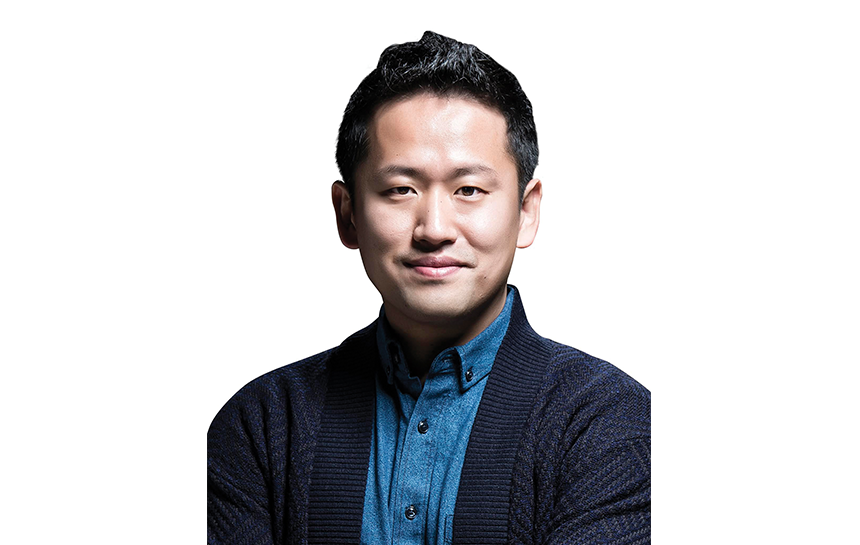Across the board and around the world there has been widespread digitalization of products and services in recent years and nowhere is that more true than in the health care industry.
Korean companies have taken a leading position in digital medical devices and China has become a major market for them.
One such company is EOFlow, which produces a disposable wearable insulin patch, that lasts for 84 hours and costs around $20 in Korea, which would be a significant cost reduction from other portable insulin pumps on the market in China which can cost upwards of $800 for the main unit. The company has recently entered the China market through a joint venture with Chinese medical giant Sinocare.
But the China market, while massive, poses unique challenges. Perry Jung, venture capitalist and co-founder of Korean VC firm Vision Creator, discusses the key values Korean companies can provide in the Chinese market, the difficulties of transferring sensitive data out of China and the benefits of having a high-quality partnership with a Chinese firm.
Q. What was the motivation behind EOFlow entering the China market over other global markets?
A. The China market is our first major venture outside of Korea, although we do have some links to European and Southeast Asian markets and companies. The fundamental benefit offered by the China market, despite its complexity, is its size. Taking a very simple view, that means more opportunities for sales and therefore income.
As well as the direct financial benefits of the size of the China market, the massive user base provides the opportunity for rapid product and service development. The more users we can gather data and feedback from, the quicker we can produce newer iterations of products and services to better suit target demographics.
Q. What are the key areas of value that Korean companies can provide to Chinese partners and customers?
A. For complex things like medical devices, there is a large manufacturing technology gap between China and Korea. It would certainly take Chinese manufacturing well over two years to catch up, it’s likely closer to between three and five years in some areas. And this means that the manufacturing capability and expertise offered by Korean firms is attractive to potential Chinese partners. EOFlow, for example has recently created a joint venture with Sinocare for the production of devices domestically in China, where costs of production are lower.
There is a strong trend for Korean companies to target Asian markets, particularly China. EOFlow has a global top-tier insulin pump technology, but it is not unique in this. Its main competitor Insulet (PODD, Nasdaq), for example, is a large company that also produces wearable small insulin pumps in the US and the EU markets, but not China. Everyone is aware of the massive market opportunity in China, where technology production is somewhere between three and five years behind, but Insulet shows no sign of entering the Chinese market, simply because it does not have the production capacity to do so. The company originally aimed at the EU and US markets and will stay there until it develops to a size where it can look to expand, but for EOFlow, the product was developed with Asia in mind.
Q. What advantages did you gain by entering the China market as part of a joint venture (JV)?
A. The China market is not an easy place to set up a business without a Chinese partner. It also helps if you find a much larger company to partner with, again because of the size of the market. EOFlow focused on finding a top-tier Chinese counterpart to work with in order to make sure that access to the market would be easy and, more importantly, the registration process of the product would be smooth.
Foreign companies find it much harder to handle the detailed localization work in China, so you need a qualified, sincere and capable partner. In most joint ventures, the foreign companies will contribute a lot in the first two or three years, such as their products, technology and know-how. But in the long run, the Chinese companies will be the ones doing the heavy lifting, otherwise the venture will struggle to be successful. Nationwide branding and marketing, among other things, are extremely difficult in China, sometimes even for Chinese brands, so expecting a foreign company to do it themselves would be unwise.
This is also why we were happy to agree to an equity split that gives the majority share in the partnership to the Chinese party. Our role is to provide the advanced technology of our product, along with a few other things, but the Chinese company will be doing most of the work and that means it would be unfair to ask for more, in our view at least.
Q. Given the importance of the Chinese partner’s role in the JV, what were your priorities in terms of choosing a partner?
A. The success rates of setting up a Chinese joint venture are pretty slim, so finding the right partner is a difficult but necessary part of the process. As well as looking for a Chinese partner with the right attributes, the non-Chinese company needs to have certain attributes, such as reputation and overseas certifications, to be an attractive option as well.
The first time we tried to approach a top-tier Chinese partner was at a point when our product was still in development, and we didn’t hold a license in any of the global markets. We approached a couple of the major Chinese medical devices companies and they all said that they were interested, but perhaps only three to five years down the line. But once we’d reached a point where we held a European license, had solid references from companies that we were already working with and had a fully-functioning product, we came back to the China market with several requirements for our potential partners.
We did not want to settle for anything below the top-tier of Chinese medical device firms for our partner. That meant that if we couldn’t find one right away, then we were willing to wait a year or two rather than compromise—we have long-term goals and that will take patience. To identify such a partner we engaged in extensive market research, looking at their openness to cross-border collaboration, and their track record and capabilities in the industry, particularly in relation to the registration process for the Chinese Food and Drug Administration as we needed a clear idea of whether they were capable of doing it and how long it would take. Beyond this, the main attributes we were looking for are the same as any M&A deal.
I also think it is important to highlight the fact that even though both potential partners are a perfect match on paper, a deal isn’t guaranteed. Personal differences, especially across cultures, can have a real effect on decision-making and sometimes it causes a break in the deal. This is the reason why we took a humble approach to finding a partner as we knew we were the much smaller player.
Q. What were the main barriers you faced when entering the China market and how did you overcome them?
A. We overcame the difficulties in finding a partner by actively coordinating with pre-existing connections in China. We also overcame the linguistic and cultural barriers through use of a team that has a huge amount of professional experience in cross-border mergers and acquisitions. We were lucky to have these aspects, but at the same time, there are still things you can learn and develop more.
The Korean market is also highly competitive, so we benefited from that in developing strong networking capabilities that really helped set us apart.
Q. How does the China market differ from elsewhere in terms of product requirements and pricing?
A. Since there is a huge user base in China, the general requirement is to provide products or services at lower prices when compared to other developed countries. However, at the same time, the country’s growing middle class means that companies can create and successfully market premium products to a huge number of people. The scale of this higher-end market cannot be matched anywhere outside of China.
In terms of the requirements for the products themselves, we have found Chinese consumers to be very polarized. There is the discerning consumer, who prefers high-quality medical devices that have some proven track record and certifications in foreign markets. While another large number of people prefer very low-priced mass production products.
Q. EOFlow has recently gone public on the Korea Exchange. To what extent did entering the China market help facilitate EOFlow’s successful IPO?
A. Massively so. We think that having a signed memorandum of understanding (MOU) with our potential Chinese partner right before our initial public offering on the Korean Stock Exchange was instrumental in helping EOFlow pass through the exchange’s evaluation process. The MOU clearly showed that our technology was very much welcomed in the China market, which in turn did wonders for demonstrating our future viability.
The successful establishment of the JV and investment from Sinocare also helped the stability of our stock price after the IPO.
Interview by Patrick Body
Perry Jung is a venture capitalist and co-founder of Korean VC firm Vision Creator. The company’s most recent project was with medical device maker EOFlow. He is also the author of two books on wealth management topics.




















